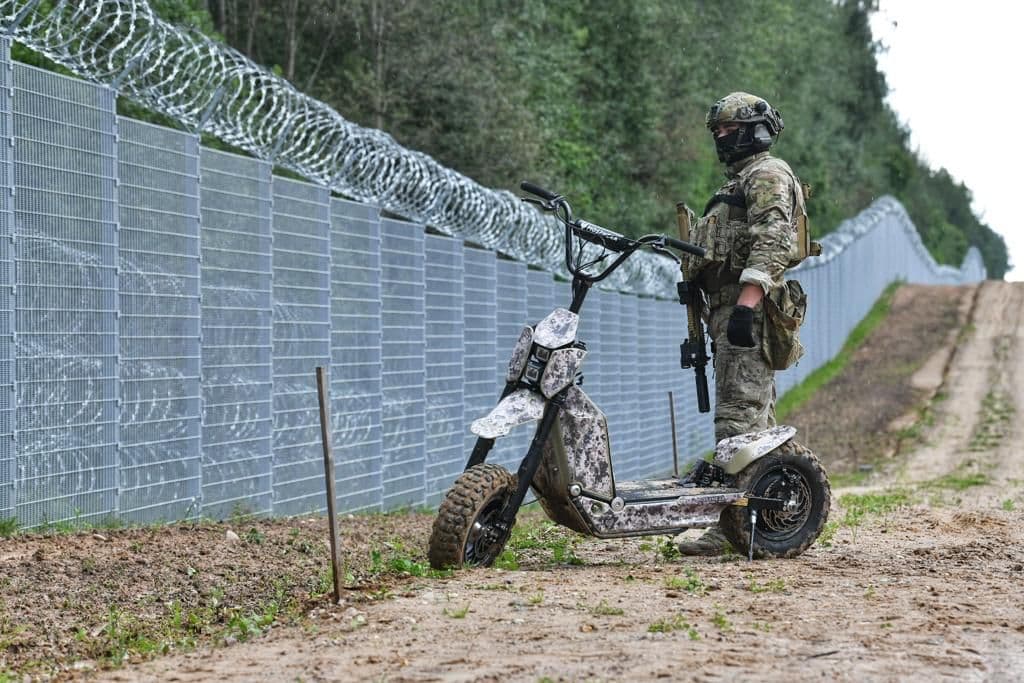How the Ukraine-Russia war is transforming technology in Eastern Europe
European countries see Ukraine's mobilization as a warning and a source of inspiration. In response, they invest in defense technology and adapt consumer products for military applications.
Published on December 5, 2024

As editor-in-chief, Aafke oversees all content and events but loves writing herself. She makes complex topics accessible and tells the stories behind technology.
In Eastern Europe, especially in Latvia, consumer technologies are being converted for military use amid the conflict in Ukraine. Global Wolf Motors' Mosphera scooter, originally for urban mobility, has become an unexpected military tool. Since the February 2022 invasion, 11 Mospheras have been sent to the Ukrainian military, requesting 68 more. According to MIT, Latvia is investing heavily in defense technology, with more than €300 million for border fortifications and a drone program. This conflict has increased defense technology investment in Europe - nearly $1 billion was invested by 2023.
From urban mobility to military deployment
The Mosphera scooter perfectly illustrates how civilian technology adapts to war conditions. With a top speed of 100 kilometers per hour and a range of 300 kilometers per charge, this scooter provides crucial mobility for special units. Ukrainian troops use the vehicles for rapid reconnaissance and ammunition transport. The scooters are equipped with special trailers for NATO-standard ammunition boxes. Global Wolf Motors, founded in 2020, saw its product transform from an agricultural and urban means of transportation to an essential military tool. The first two scooters were deployed to the front within weeks of the Russian invasion.
Latvia's technological defense strategy
The Latvian government has set a clear course toward military innovation. With an investment of €600,000 for domestic drone startups and €10 million for a new drone program, the country is actively promoting defense technology development. As co-leader of the Drone Coalition and the United Kingdom, Latvia directs more than €500 million toward building a Western drone production chain. The urgency is palpable: the Latvian fire department has been inspecting underground structures as potential shelters since early 2024. Kaspars Pollaks, former naval officer: “In Latvia, we are more or less preparing for war.”
Just last week, another Latvian defense technology startup, Origin Robotics, received a €4.5 million grant from the European Defense Fund (EDF). Origin will develop a portable ISTAR (intelligence, surveillance, target acquisition, and reconnaissance) drone with laser target acquisition.
European defense industry in transition
The defense sector in Europe is undergoing a remarkable transformation. Nearly $1 billion was raised for dual-use and military technology companies in 2023, an increase of about 30% from 2022. The European Commission has earmarked more than €7 billion for defense research and development through 2027. This revival comes after decades of winding down since the Cold War. Ivan Tolchinsky, CEO of Atlas Dynamics (a European drone manufacturer), identifies an important trend: “European defense ministries now want large numbers of drones and demand domestic production. This illustrates the growing focus on strategic autonomy in defense technology.”
The Netherlands is also investing heavily. In October, the cabinet announced the release of €100 million for an investment fund: the SecFund (“Security Fund”). The funding will go to Dutch startups, scale-ups, and innovative SMEs that meet Defense's innovation needs.
Lasting shift in European defense industry
The conflict has inadvertently made Ukraine the world's most crucial test site for defense technology. Ieva Ilves, technology policy expert, tells MIT, “Ukraine is currently the best experimental ground for defense technology in the world.” Companies like Exonicus have already struck deals with several NATO countries to train Ukrainian combat medics. The war has led to a drastic streamlining of procurement processes, allowing new technologies to be tested and implemented faster than in peacetime. These developments suggest a continued shift in the European defense industry, with the line between civilian and military technology increasingly blurred.
